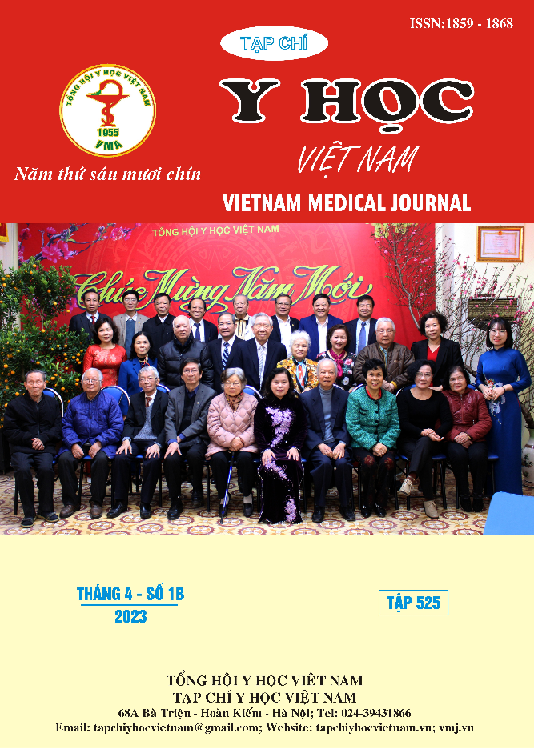CORRELATION OF LEFT VENTRICULAR FUNCTION WITH ELEMENTS OF METABOLIC SYNDROME IN PATIENTS WITH TYPE 2 DIABETES MELLITUS
Main Article Content
Abstract
Objective: To determine the correlation between left ventricular function and elements of metabolic syndrome (MS) in patients with type 2 diabetes mellitus (DM). Subjects and research methods: The cross-sectional descriptive study was conducted with 183 patients with type 2 diabetes with MS and 75 patients with type 2 diabetes without MS at Thai Binh Medical University Hospital from February to the end of August 2022. Results: The average age of the study subjects was 69.3 ± 7.8, the age from 60 to 69 years in the group with metabolic syndrome accounted for the highest proportion (74%). The ratio of women to men with MS is 2/1. Type 2 diabetes patients with MS, with overweight and large abdominal circumference were higher than patients without MS (2.5/1, 8/1, respectively), p<0.05. There is a positive correlation between the left ventricular Tei index, the inverse correlation between the wave peak velocity E, the E/A ratio with fasting glucose concentration (respectively r=0.16, p<0.05; r=-0.16, p<0.05; r=-0.16, p<0.01). E-wave peak velocity, E/A index, ejection time are inversely correlated with diastolic blood pressure (respectively p<0.05). Cardiac output was positively correlated with systolic blood pressure, r=0.26, p<0.001. Tei index of left ventricular was inversely correlated with systolic blood pressure, r=-0.17, p<0.05. Ejection time was inversely correlated with triglyceride levels, HDL-C, LDL-C (r=-0.1, p>0.05, respectively; r=-0.26, p<0.01; r=-0.24, p<0.001). Cardiac output was positively correlated with abdominal circumference (p=0.005) and BMI (p<0.05). When multivariate linear regression analysis found that blood lipid indicators are inversely proportional to the E/A ratio, volume contraction time, ejection time, proportional to the volume contraction time, left ventricular Tei index. Conclusion: Factors of metabolic syndrome that affect left ventricular function in patients with type 2 diabetes.
Article Details
Keywords
Type 2 diabetes mellitus, metabolic syndrome (MS), Tei index.
References
2. Yokota S, Tanaka H, Mochizuki Y, et al (2019). Association of glycemic variability with left ventricular diastolic function in type 2 diabetes mellitus, Cardiovasc Diabetol;18(1):166.
3. Bùi Thị Quyên (2012). Hình thái và chức năng thất trái ở bệnh nhân đái tháo đường type 2 có tăng huyết áp tại bệnh viện Đa khoa Trung ương Thái Nguyên, Luận văn Thạc sĩ, Trường Đại học Y Dược Thái Nguyên.
4. Nyman K, Granér M, Pentikäinen MO (2018). Metabolic syndrome associates with left atrial dysfunction, Nutr Metab Cardiovasc Dis, 2018 Jul;28(7):727-734.
5. Hatani Y, Tanaka H, Mochizuki Y (2020). Association of body fat mass with left ventricular longitudinal myocardial systolic function in type 2 diabetes mellitus, J Cardiol;75(2):189-195.


